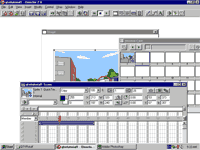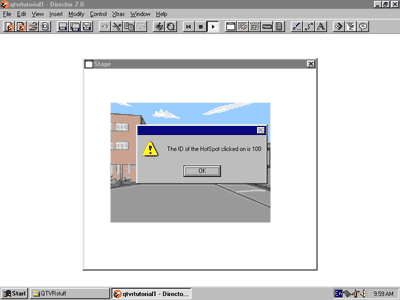1. Select the QTVR sprite on the score and then select New Behavior from
the Behavior drop down menu in the score

2. Delete any existing script and type the following (the text can be
copy and pasted into the Behavior script window):
Getting hotspots to interact
with Lingo
1. Select the QTVR sprite on the score and then select New Behavior from
the Behavior drop down menu in the score

2. Delete any existing script and type the following (the text can be
copy and pasted into the Behavior script window):
| property
p_currentSprite --The BeginSprite handler is called when the QTVR sprite first appears -- on stage. It determines the channel that the sprite is residing in and -- then sets up the handler - HotSpotCallback - to be called when a user -- clicks on a hotspot on BeginSprite me set p_currentSprite = the SpriteNum of me set the triggerCallback of sprite p_currentSprite = #HotSpotCallback end -- The HotSpotCallback handler simply alerts the ID of the hotspot -- clicked on on HotSpotCallback me, theHotSpotID alert "The ID of the HotSpot clicked on is " & theHotSpotID end < --The EndSprite handler is called when the playback head enters a frame -- where the QTVR sprite is absent. It clears the triggerCallback -- property on EndSprite me set the triggerCallback of sprite p_currentSprite = 0 end |
| What happened to VRTriggerCallback? |
| In Director 6.5,
the VRTriggerCallback property fulfilled the same function as triggerCallback
does in 7.0 VRTriggerCallback in Director 7.0 still works in the same way [undocumented] |

|
|